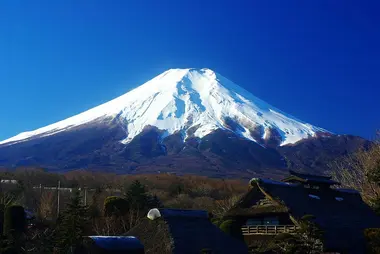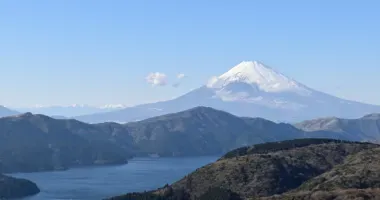Oshino Hakkai Village 忍野八海
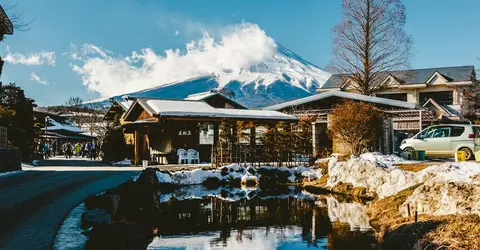
Oshino Hakkai, a village close to Mount Fuji
Flick/ hans-johnson
The Hidden Lake of Mount Fuji
Located at the foot of Mount Fuji, Oshino Hakkai is a small village very popular with Japanese people. Developed to highlight local crafts, this thatched village is actually the 6th lake in the region!
A reconstructed traditional village
With its thatched-roof houses , tall grass and watermill , Oshino Hakkai stands out from the other villages that surround Japan's highest mountain.
Listed as a World Heritage Site since 2013 for its unique architecture , this small town is now mainly dedicated to local crafts .
Although the village is still home to 9,200 inhabitants , it is its center laid out in the Edo era that attracts all eyes. And every day, many visitors come to stroll through its shopping streets where Japanese pastries and traditional restaurants mingle with souvenir stalls and silk shops .
See: Tomioka silk mill
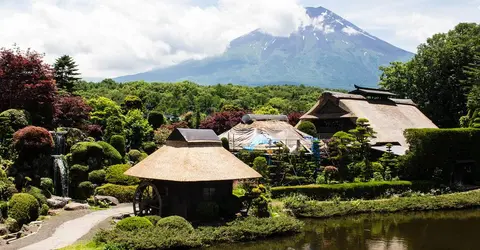
The roofs of the houses in the village are thatched
Flick/LimpingFrog Productions
In order to learn a little more about the history of the region, a museum has even been opened in the heart of the village .
From how thatched roofs were made to how vegetables were grown, the Hannoki Bayashi Shiryokan Museum is a good way to learn about the way of life of the Japanese who lived at the foot of Mount Fuji two centuries ago.
Discover: Museum of Popular Arts
But it is especially for its 8 ponds that the Oshino Hakkai village is so popular today.
Mount Fuji's 6th Lake
Located in the 5 Lakes region , near Lake Kawaguchiko , Oshino Hakkai was itself a lake 800 years ago!
Nicknamed the "6th lake in the region" , the village was actually formed following the successive eruptions of Mount Fuji which gradually evaporated the water from the lake to leave behind only 8 freshwater basins.
These 8 ponds are today the symbols of the village. And the latter even takes its name from it!
Literally "8 seas", the word " Hakkai " here refers to the 8 ponds of Oshino : Deguchi, Okama, Sokonashi, Choushi, Waku, Nigori, Kagami, and Shoubu.
Each basin was then named from a characteristic of its own. Like the "Deguchi" ( "exit" ) lake which is located at the edge of the village, or the "Kagami" lake, ( literally "mirror" ), in which Mount Fuji is reflected when it good weather.
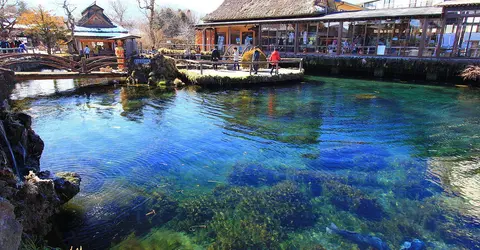
The beauty of the Oshino ponds have made the village famous
Wikimedia
Drinking water at all times
The Oshino ponds are the main attraction of the village. Whether for their pretty blue color or for the quality of their water!
Indeed, these basins are fed naturally by the melting of the surrounding snow , a runoff that crosses several layers of porous lava before reaching the ponds.
See also: The Snow and Ice Museum
The lava being a natural filter, the water in the ponds is therefore very pure. So much so that in the past, people even came to purify themselves in the village pools to receive the benefits of the sacred water of Mount Fuji!
In 1985, OshinoHakkai also appeared in the ranking of the “100 purest waters in the archipelago”. A reputation that is well established for this small thatched village located at the foot of the roof of Japan.
For further :
- When to climb?
- 7 facts about Mount Fuji
- Budget to plan for the ascent
- Five onsen with views of Mount Fuji
- Three little-known caves at the foot of Mount Fuji
- Fujiyoshida
- Mount Fuji in numbers
- Climbing Mount Fuji, rules of good conduct
- Feature: Climbing Mount Fuji
- Mount Fuji Climbing Routes
- Mount Fuji in history, culture and art
Address, timetable & access
Address
Timetable
30 minutes by bus from Kawaguchiko station (Fujikyuko line), Oshino Hakkai Iriguchi stopPrice
Entrance to the village free, entrance to the museum 300 yen (2.30 euros)Access
Museum: 9 a.m. - 5 p.m.

